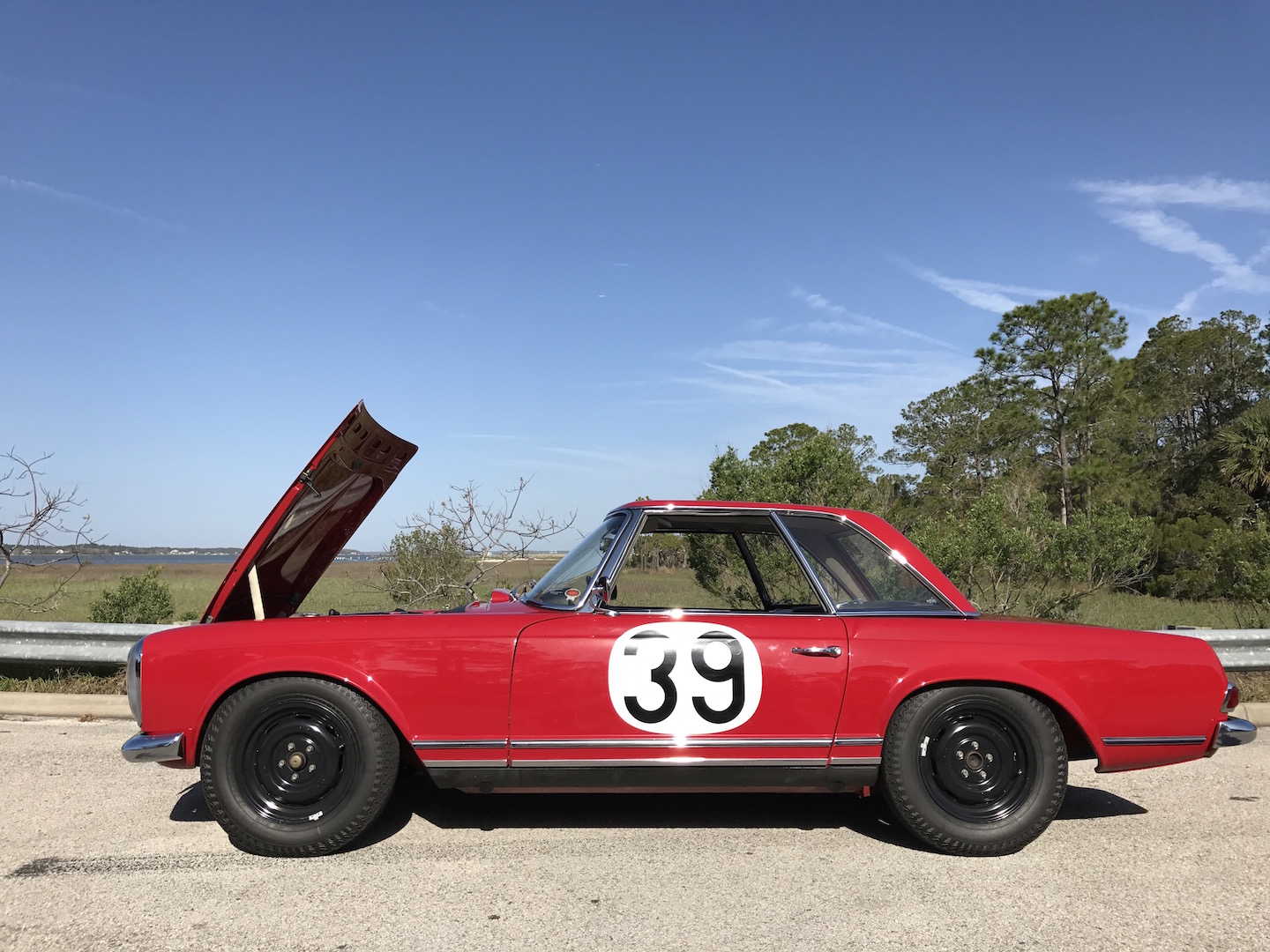We may earn revenue from the products available on this page and participate in affiliate programs. Learn more ›
Behind the wheel of the 1963 Mercedes 230 SL Pagoda, buzzing along Route A1A on Amelia Island during the annual Concours d’Elegance, I left my iPhone back in the hotel room. I hate modern life. Grabbing ahold of the gossamer wheel of this brilliant rally-spec restoration, the 170-horsepower 2.6-liter straight six might as well have been a time machine. To hell with modern life.
The legroom is business class, the greenhouse tall, the vision 360-degrees. The b-pillar is no wider than a churros, and the black shifter ball atop the 4-speed transmission perfectly proportioned for someone who doesn’t need 1,000 horses to feel right with the world.
The original Pagoda raced to an overall victory in the Marathon de la Route, from Belgium to Bulgaria and back, a total of 5,500 kilometres in 90 hours from 27 to 31 August, 1963. Eugen Böhringer and Klaus Kaiser co-drove the W113 through narrow passes and mind-numbing straightaways. In 1962, Böhringer was European Rally Champion, driving a Mercedes-Benz 220 SE with Hermann Eger as his co-driver.
The Mercedes-Benz 230 SL, nicknamed ‘Pagoda’ because of its dome-shaped hardtop, was the successor the the wildly successful 190 SL and 300 SL. The engine is fuel injected, which helped it adjust power in the altitude changes on the rally route, and the new platform was the first sports car to feature a safety body. It had typical rally mods, like reinforced and tuned suspension, larger fuel tanks, and a hardtop attached to the body.
The bad news is that the original car driven by Böhringer and Kaiser is lost to history. The good news: Mercedes restored another 230 SL to the exact specifications of the original car. And for that we tip our cap to the old world.






Insert Image

